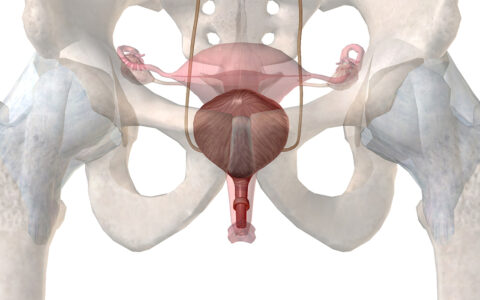Once expected to be a “problem solved,” maternal morbidity and mortality rates in the U.S. have climbed over the past decades, putting us behind other developed nations in losing more mothers to hemorrhage and other complications of delivery. A World Health Organization bulletin identifies inconsistent obstetric practices as one of three factors likely contributing to high complication rates.
Postpartum hemorrhage (PPH) during the third stage of labor is one of the strongest predictors of poor maternal outcomes, says Mavis Schorn, Ph.D., senior associate dean for academics at Vanderbilt University School of Nursing. Schorn and Julia Phillippi Ph.D., specialty director of the nurse midwifery educational program, will be co-PIs on a forthcoming study probing the relationship between the timing of pitocin administration (pre- or post-placental expulsion) and excessive bleeding risk.
The research stems from a large survey Schorn conducted, with support from Vanderbilt Institute for Clinical and Translational Research, on what practices various types of clinicians employ during routine births, and how these practices correlate with outcomes.
“We now know some providers use pitocin before expulsion of the placenta and others use it after placenta expulsion. We want to explore if the timing influences the PPH rate.”
“We now know some providers use pitocin before expulsion of the placenta and others use it after placenta expulsion. We want to explore if the timing influences the PPH rate,” Schorn said.
A Larger Study
The impact of pitocin timing has been investigated in published studies, but many were either small or posted conflicting results. Schorn and Phillippi hope their more comprehensive study will provide a decisive answer on what magnitude of difference timing makes, and that the data will inform practice statements and guidelines. “Both timing practices can be considered ‘standard of care,’ since the position statement on care during the third stage only recommends giving it, but not when to give it,” Schorn said.
The researchers will enroll approximately 2,700 women over one year, who will be randomized to pitocin either before or after placental expulsion. They will also extract 19 demographic and clinical characteristics from patient health records. Chief among them will be whether labor was induced, whether there was a history of PPH, and the length of first and second stage labor.
The quantity of postpartum blood loss will be the primary outcome. Secondary outcomes will include rate of postpartum hemorrhage, maternal morbidity and mortality, length of third stage labor, time to placental expulsion, manual removal of the placenta, postpartum use of the OR, administration of blood products, admission to ICU, shock, hysterectomy and length of stay.
“With 1,350 patients in each arm, we should have over 80 percent power to detect an absolute postpartum hemorrhage difference of 2.1 percent, or about a halving of the risk,” Phillippi said.
Driving Best Practices with Data
Phillippi, whose work focuses on collaborative care and community access to care, conceived the idea to distill survey data down to a pragmatic study on this one key variance. “We do so many things based on experience, but it doesn’t necessarily have good data to support it. For now, we’re pulling the thread on this one impactful decision to see if we can identify the better practice,” she said.
“We’re pulling the thread on this one impactful decision to see if we can identify the better practice.”
Schorn’s survey data shows about a 50/50 split between pre- and post-placental administration of pitocin. Those in either camp may be entrenched in their current practice, Schorn says. “People feel very strongly about their preference. While clinical judgment is critical for treating individual circumstances, when you see conflicts in providers’ blanket practices for normal births, you have to ask why they should exist.”
The next steps are to return to the survey data and study other variables and practice variances that impact outcomes. “We asked them a myriad of questions like ‘Do you have the equipment you need, proper lighting, what is the noise level, are you interrupted by pages and calls?’ ” Schorn said. “We are starting with what we believe is the most critical decision point, and then we will chip away at these other practices. Hopefully we can offer the evidence for new position statements that are more specific and based on solid data.”






